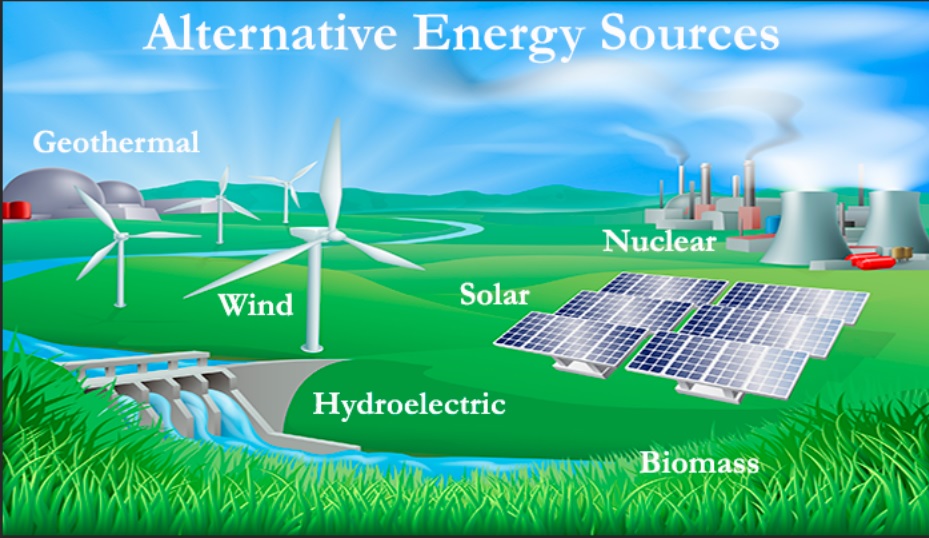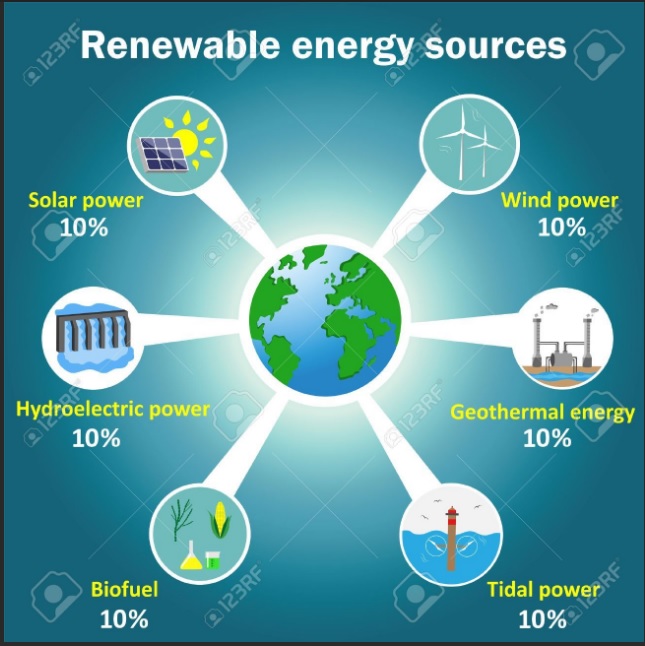Have you ever thought about how life was a few decades ago compared to today? Or how the current life, lifestyle, and daily activities compare to the past? I'm sure you believe that there will definitely be a noticeable difference, especially when we see changes in our daily lives at such a rapid pace, thanks to modern technology.
It's not easy to overlook the impact of modern technology on our lives. It wouldn't be wrong to say that humans are now interconnected with the whole world thanks to modern technology. Our social and economic status is also closely linked to technology. The way modern technology is affecting our lives can be understood by examining the following developments:
Energy from the Sun:
The Sun provides us with abundant energy, with an annual energy output of 85,000 terawatts. In comparison, our planet's energy consumption is only 16 terawatts per year, meaning the Sun provides us with 5,000 times more energy than we need.
While it may seem strange that we are polluting our Earth by burning fossil fuels when such a vast amount of energy is available from the Sun, the current situation is rapidly changing, and new technologies are emerging that can be used even in Pakistan. Solar cells are commonly made from silicon wafers. These glass-like crystalline materials have achieved commercial efficiency of up to 20%. However, producing solar panels from the same material can be costly, but they are suitable for areas where it is possible to build grid stations for supplying cheap electricity. Thin-film solar cells, amorphous nanocrystalline, and other types of silicon are also prepared from different materials, using chemical vapors to produce them.

Concentrated Solar Power (CSP) generates steam with a temperature of 850 degrees Fahrenheit, which is used to drive turbines that generate electricity. These turbines are controlled by computers, and they concentrate the Sun's light onto a boiler. Experts believe that the use of CSP technology will double worldwide within 16 months.
Solar Panels:
The Sun provides more energy to the Earth's surface than we can ever use, but capturing that energy efficiently has been a challenge. Solar panels require sunlight to generate electricity, but they cannot harness all the energy available from the Sun. However, new devices are being developed to use the infrared rays (which are available even at night) to generate power.
This technology relies on arrays of highly sensitive antennas, which are a significant source of energy. Half of the total energy in sunlight is in the form of infrared radiation. Infrared radiation is also available when the Sun has set. American Energy Department officials believe this technology could increase the efficiency of next-generation solar cells by up to 42%.
Biological Fuel Production:
Biofuels are making their mark in the car market, with fuel cell vehicles becoming mainstream. In addition to traditional fuel cells, many companies are working on the production of essential diesel fuel. Ethanol production typically involves fermentation with yeast, but the yeast strain used in this process cannot convert another important sugar, xylose, which is a significant component of plant biomass.
Now, scientists from the University of Illinois, Lawrence Berkeley National Laboratory, the University of California, and BP have discovered a new yeast strain that can convert both glucose and xylose into ethanol, potentially increasing ethanol production significantly.
Harvesting Thermal Energy from Oceans:
The temperature difference between the surface and the depths of the ocean can be used to generate electricity. This technology involves pumping warm seawater from the surface and cold water from the deep sea. The temperature difference is used to vaporize a liquid, such as ammonia, which is then converted into gas to drive turbines. This process is controlled by a heat exchanger, and the generated gas is condensed back into liquid ammonia with cold seawater at the surface.
The temperature difference between surface water and deep-sea water is typically 60-86 degrees Fahrenheit (15-30 degrees Celsius). This additional temperature difference can result in a 15% increase in energy production.
Battery Materials for Electrical Vehicles:
The biggest challenge for electric vehicles is the materials required to charge their batteries. One solution is to charge these batteries using pre-charged liquid fluid batteries. Discharged battery fluid can be removed from the battery like refueling a car with an empty tank. This technology is currently being developed using semi-solid flow batteries, which are proving to be much better than heavy and expensive flow batteries.
These developments showcase how rapidly evolving technology is shaping our lives and changing the way we generate and use energy, produce biofuels, harness the power of the ocean, and store electricity efficiently for electric vehicles. The world is witnessing significant advancements that have the potential to revolutionize various industries and improve our quality of life.
These new batteries are quite lightweight and durable, and they use a new electrolyte prepared in 777384, which provides 10 times more power compared to old batteries. MIT research has named it "Cambridge Crude," which is derived from petroleum obtained from cars running on petrol. Now, electric vehicles are no longer slow like copper wire electric vehicles. The fastest electric sports cars can travel at a speed of 60 miles per hour in just 3 seconds.
Energy from Hot Rocks:
In Cornwall, UK, there is a project underway to harness energy from hot rocks, which emit temperatures exceeding 150 degrees Celsius. A 3-megawatt commercial thermal power plant will absorb heat from depths of 3 to 5 kilometers below the Earth's surface. In this project, a hole will first be drilled into the ground, and then water will be injected into this hole at high pressure. This will create small fractures in the hot rocks, not only causing them to expand but also creating a network of narrow channels. Steam produced by passing through these narrow channels will be used to drive turbines that generate electricity. A commercial project based on this technology is underway in Germany.
New Solar Technologies:
In recent years, there have been significant advancements in the use of solar technology. The Council of Scientific and Industrial Research in Australia has introduced a new technology that utilizes only sunlight and air to generate electricity. In the "Tower of Power," a train of 450 mirrors is used to concentrate sunlight, heating the trapped air. The heated air is then directed through a tower, driving a turbine to produce electricity. This electricity is sufficient for powering 100 homes, but currently, the system is used only for research purposes.
Researchers at Oregon State University in Korea have successfully developed thin-film absorbers for solar cells that use materials containing silicon nanoparticles. Another breakthrough involves using silicon ink to create solar cells. An American company has achieved 91% efficiency with these solar cells, compared to typical solar cells with an efficiency of up to 51%. These solar cells include silicon nanoparticles that scatter sunlight in an environmentally friendly manner to produce solar energy.
Quantum Dots: The Next Generation of Solar Cells:
Solar cells convert energy from the sun into electricity. Sunlight consists of photons. Solar cells excite electrons in the material by giving them energy in the form of photons. As a result, these electrons start moving, creating an electric current. This generated electricity is in the form of direct current (DC), which can be used to power light bulbs and other electrical devices.

Solar cells available in the market are typically made from silicon wafers. Their efficiency ranges from 14% to 18%. However, new solar cells made from different materials have achieved much higher efficiency, ranging from 38% to 42%. The latest advancement in this field is the use of quantum dots in solar cells, which are sprayed onto roofs and windows like paint.
Quantum dot solar cells are extremely thin particles made of semiconductor material. They can be easily sprayed onto roofs and windows like paint. Initially, scientists at Stein Ford University developed quantum dots from well-known materials, but now researchers from the University of Toronto and King Abdullah University of Science and Technology have discovered quantum dots from non-nominal components. These solar cells have achieved a record-breaking efficiency of 38%. It is hoped that soon these cells will be ready for commercial use on a larger scale.


No comments:
Post a Comment